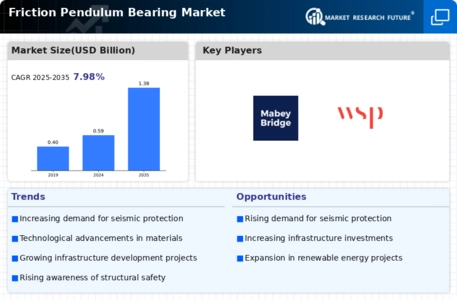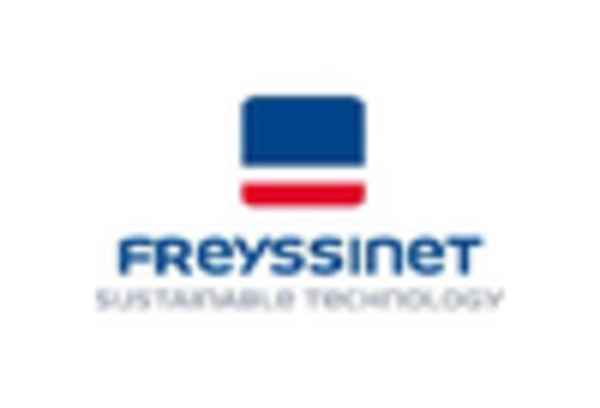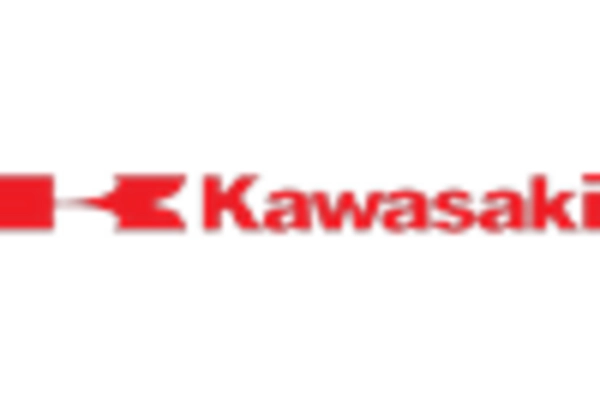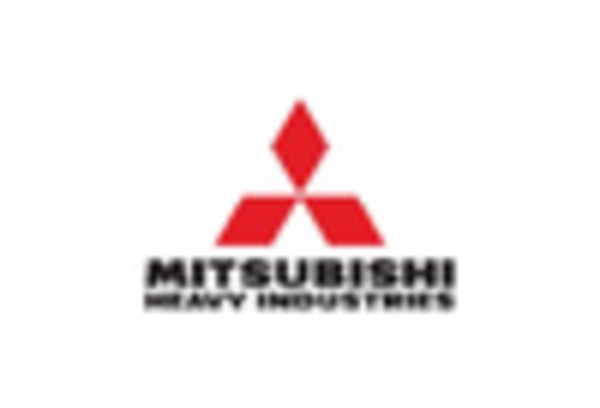Rising Seismic Activity Awareness
The Friction Pendulum Bearing Market is significantly influenced by the rising awareness of seismic activity and its potential impacts on structures. As urbanization continues to expand, the risk of earthquakes poses a serious threat to buildings and infrastructure. Consequently, there is an increasing emphasis on implementing advanced seismic protection systems, including friction pendulum bearings, which are designed to absorb and dissipate seismic energy. Recent studies suggest that regions prone to seismic events are likely to adopt these technologies more aggressively, leading to a projected market growth of around 7% annually. This heightened awareness and proactive approach towards seismic safety are expected to bolster the demand for friction pendulum bearings in the coming years.
Growing Demand in Emerging Economies
The Friction Pendulum Bearing Market is witnessing a growing demand in emerging economies, where rapid urbanization and infrastructure development are taking place. Countries in Asia and South America are investing in modernizing their infrastructure to support economic growth, which includes the construction of earthquake-resistant buildings and structures. This trend is likely to create substantial opportunities for friction pendulum bearings, as they are essential for ensuring structural integrity during seismic events. Market analysts predict that the demand for these bearings in emerging markets could grow by 8% annually, driven by the need for enhanced safety measures and the adoption of advanced engineering solutions. This burgeoning market segment presents a promising avenue for manufacturers and suppliers of friction pendulum bearings.
Increasing Infrastructure Development
The Friction Pendulum Bearing Market is experiencing a surge due to the increasing infrastructure development across various regions. Governments and private entities are investing heavily in constructing bridges, highways, and high-rise buildings, which necessitate advanced seismic protection solutions. The demand for friction pendulum bearings is likely to rise as these structures require enhanced stability and safety measures against seismic activities. According to recent data, the construction sector is projected to grow at a compound annual growth rate of approximately 5% over the next few years, further driving the need for innovative bearing solutions. This trend indicates a robust market potential for friction pendulum bearings, as they provide effective isolation and damping capabilities, essential for modern infrastructure projects.
Technological Innovations in Bearing Design
The Friction Pendulum Bearing Market is benefiting from ongoing technological innovations in bearing design and materials. Advances in engineering and materials science have led to the development of more efficient and durable friction pendulum bearings, which can withstand extreme conditions and provide superior performance. Innovations such as the integration of smart technologies and enhanced friction materials are likely to improve the functionality and lifespan of these bearings. As a result, the market is projected to expand, with an estimated growth rate of 6% over the next five years. These technological advancements not only enhance the performance of friction pendulum bearings but also contribute to their increasing adoption in various applications, including seismic isolation systems.
Regulatory Frameworks Promoting Safety Standards
The Friction Pendulum Bearing Market is positively impacted by the establishment of regulatory frameworks that promote safety standards in construction and engineering. Governments and regulatory bodies are increasingly mandating the use of advanced seismic protection systems in new constructions, particularly in earthquake-prone areas. This regulatory push is likely to drive the adoption of friction pendulum bearings, as they are recognized for their effectiveness in mitigating seismic risks. Recent regulations have been introduced that require compliance with stringent safety standards, which could lead to a market growth of approximately 5% in the coming years. The alignment of industry practices with these regulations is expected to enhance the credibility and demand for friction pendulum bearings.


















Leave a Comment